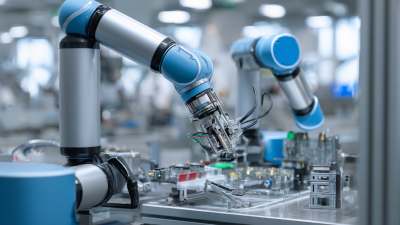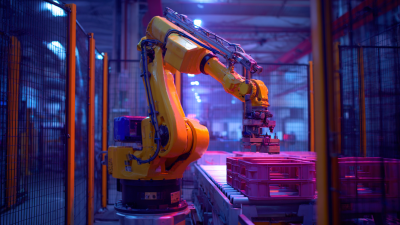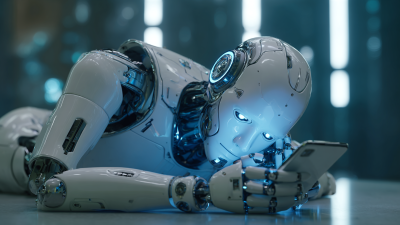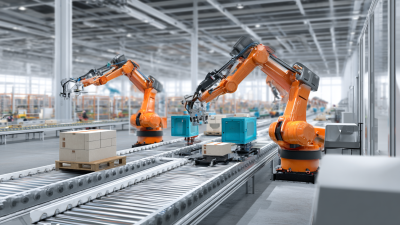Exploring the Future of Robotics Engineering in Everyday Life
As we stand on the brink of a technological revolution, the realm of robotics engineering is poised to transform our everyday lives in unprecedented ways. Anticipating the future, we delve into the myriad applications of robotics engineering that promise to enhance convenience, efficiency, and safety in our daily routines. From smart home devices that automate mundane tasks to advanced robotic systems in healthcare that assist in surgeries and patient care, the integration of robotics into our lives is not just a possibility; it's an impending reality.

This exploration reveals how innovations in robotics engineering can solve complex problems, improve productivity, and redefine our interactions with technology. As we navigate this evolving landscape, understanding the implications and potential of robotics engineering becomes essential for harnessing its benefits. Join us on this journey as we uncover the practical "how to" strategies that can help individuals and industries adapt to and thrive in a future enriched by robotics.
Impact of Robotics on Daily Household Tasks and Efficiency
 The integration of robotics into daily household tasks is revolutionizing the way we manage our homes. From robotic vacuum cleaners that autonomously navigate our living spaces to smart assistants that help us with scheduling and organization, these technologies are enhancing our efficiency. For instance, robotic lawnmowers can maintain our gardens with minimal human intervention, freeing up time for families to engage in activities they enjoy. As these devices become more advanced, their ability to learn from their environment also improves, leading to increasingly effective solutions tailored to individual household needs.
The integration of robotics into daily household tasks is revolutionizing the way we manage our homes. From robotic vacuum cleaners that autonomously navigate our living spaces to smart assistants that help us with scheduling and organization, these technologies are enhancing our efficiency. For instance, robotic lawnmowers can maintain our gardens with minimal human intervention, freeing up time for families to engage in activities they enjoy. As these devices become more advanced, their ability to learn from their environment also improves, leading to increasingly effective solutions tailored to individual household needs.
Moreover, robotics is playing a crucial role in addressing the challenges of busy modern lifestyles. With the rise of smart kitchens, robotic chefs and meal preparation devices can streamline cooking processes, allowing for healthier meal options with less effort. Likewise, automated grocery delivery systems can help families maintain their supplies without the hassle of shopping trips. Collectively, these advancements in robotics not only make our homes smarter but also contribute to a more efficient and balanced daily life, supporting us in managing time and resources better than ever before.
Integration of AI in Robotics for Personal Assistance
The integration of artificial intelligence (AI) in robotics is poised to revolutionize personal assistance in our daily lives. With the global AI robots market anticipated to expand significantly, rising from a valuation of $5.23 billion in 2024 to projections of over $32 billion in the next decade, the demand for AI-enabled personal assistants is becoming increasingly evident. These advanced robots are designed to seamlessly interface with users, offering support in various everyday tasks such as scheduling, reminders, and managing household chores.
As the consumer robotics market continues to evolve, it is projected to reach approximately $102.31 billion by 2034. This surge reflects a growing consumer appetite for smart technologies that enhance convenience and efficiency. Furthermore, the AI Companion Robot Market, expected to reach $94.2 billion, highlights the urgent need for companionship and support, particularly in eldercare and family settings. By leveraging AI capabilities, these robots not only improve customer experience but also create meaningful interactions that enrich human life.
Future Innovations in Wearable Robotics for Enhanced Mobility
The future of wearable robotics holds transformative potential for enhancing mobility in everyday life. As technology advances, the integration of lightweight materials and sophisticated sensors will enable the development of devices that seamlessly blend with the user's body. Wearable robots, such as exoskeletons and adaptive devices, are already being designed to assist individuals with mobility impairments, allowing them to walk and engage in activities that were previously difficult or impossible. These innovations are not only improving physical capabilities but also fostering a sense of independence and confidence among users.
Moreover, future innovations in wearable robotics extend beyond assisting those with disabilities. As athletic performance becomes a focal point, wearable robotics can enhance training regimens by providing real-time feedback and support to athletes, thereby reducing the risk of injury. Additionally, advancements in artificial intelligence will allow these devices to learn and adapt to the user's movements, making them more intuitive and responsive. The potential applications in rehabilitation, civil service, and everyday domestic tasks suggest a future where wearable robotics becomes a standard aspect of life, promoting an inclusive society that embraces technology for mobility enhancement.
Exploring the Future of Robotics Engineering in Everyday Life - Future Innovations in Wearable Robotics for Enhanced Mobility
| Innovation Type | Description | Target User | Potential Benefits | Expected Development Year |
|---|---|---|---|---|
| Exoskeletons | Wearable devices that enhance movement for individuals with mobility impairments. | Elderly, disabled individuals, rehabilitation patients | Increased mobility, independence, reduced fatigue | 2025 |
| Smart Prosthetics | Prosthetic limbs equipped with sensors and motors for natural movement. | Amputees, injured patients | Enhanced functionality, better adaptation to user needs | 2026 |
| Wearable Fitness Monitors | Devices that track physical activity, heart rate, and mobility. | Fitness enthusiasts, health-conscious individuals | Improved health tracking, motivation for physical activity | 2023 |
| Robotic Wheelchairs | Smart wheelchairs with autonomous navigation capabilities. | Individuals with severe mobility challenges | Enhanced independence, improved navigation | 2024 |
| Augmented Reality (AR) Glasses | Glasses that provide real-time information and augment physical environments. | Workers in fields like construction, elderly individuals | Increased safety, improved work efficiency | 2027 |
Challenges and Ethical Considerations in Daily Robotic Use
As robotics engineering integrates further into daily life, ethical considerations and challenges emerge that demand careful attention. According to the International Federation of Robotics, the global stock of operational robots will surpass 20 million units by 2025, significantly impacting various sectors including healthcare, manufacturing, and home assistance. However, this rapid proliferation raises concerns about the implications of robotic autonomy and decision-making. How do we ensure that robots act ethically, especially in sensitive environments like hospitals or homes for the elderly, where decisions can affect human safety and wellbeing?
Additionally, the reliance on robots can lead to unintended social consequences. A report from the McKinsey Global Institute highlights that automation could displace approximately 75 million jobs by 2022. While new jobs will be created, there is a pressing need to address the ethical implications of workforce displacement and the unequal distribution of benefits from automation. Balancing the potential gains from robotic integration with the need for inclusive policies and support systems for those affected will be essential for a sustainable future. The dialogue surrounding these challenges is crucial as we navigate an increasingly automated world.

The Role of Robotics in Healthcare and Elderly Support Systems
The aging population worldwide is driving a significant transformation in healthcare systems, leading to the emergence of smart elderly support through advanced technologies. Innovations such as the Internet of Things, big data, artificial intelligence, telemedicine, and robotics are now integral in enhancing the quality of life for seniors. These technologies not only provide improved medical services but also facilitate autonomy for older adults in their daily activities, ensuring they receive timely assistance and companionship.
As the demand for elderly care rises, the robotics industry specifically designed for healthcare is poised for unprecedented growth. The market for healthcare companion robots is expected to expand significantly between 2024 and 2029, with a notable compound annual growth rate. This surge is attributed to an increasing number of elderly individuals seeking home-based assistance, coupled with advancements in automation that meet the growing needs for convenience and support. With the challenges posed by population aging and workforce shortages in caregiving, the development of AI-driven solutions within elder care is paving the way for innovative approaches that enhance both care delivery and the overall well-being of seniors.
Exploring the Role of Robotics in Healthcare and Elderly Support Systems
Related Posts
-

How to Enhance Manufacturing Efficiency with Cobot Robots in Your Business
-

Exploring the Future of Palletizing Robots at the 138th China Import and Export Fair 2025
-

What Are the Advantages of Using Robotic Process Automation Tools
-

Exploring the Future of Online Robots in Everyday Life and Digital Interactions
-

Revolutionizing Efficiency: The Future of Packaging Robots in Smart Warehousing
-

Future of Warehouse Robots at China's 138th Canton Fair 2025 Industry Insights and Market Growth Trends
Smart Robotics brand movie
Watch video


